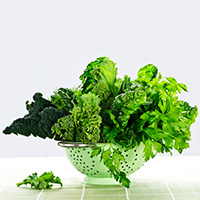Enzymes
 Enzymes are one of the major classes of antioxidants. Enzymes act as catalysts to bring about essential biochemical functions. Most enzymes are types of protein
created naturally by our body from the protein in our diet. They are very specific in that specific catalysts interact only with specific minerals in order to produce specific effects or other
biochemicals. In order for some enzymes to exhibit their antioxidant capacity they need to interact with minerals such as copper and zinc.
Enzymes are one of the major classes of antioxidants. Enzymes act as catalysts to bring about essential biochemical functions. Most enzymes are types of protein
created naturally by our body from the protein in our diet. They are very specific in that specific catalysts interact only with specific minerals in order to produce specific effects or other
biochemicals. In order for some enzymes to exhibit their antioxidant capacity they need to interact with minerals such as copper and zinc.
Superoxide dismutase
Superoxide Dismutase (SOD) is an enzyme that repairs cells and reduces the damage done to them by superoxide,
the most common free radical in the body. SOD is found in both the dermis and the epidermis, and is
key to the production of healthy fibroblasts (skin-building cells). This enzyme has also been shown
to have anti-inflammatory properties, and has also been used to help treat arthritis, prostate
problems, corneal ulcers, burn injuries, inflammatory diseases, inflammatory bowel disease, and
long-term damage from exposure to smoke and radiation, and to prevent side effects of cancer drugs.
SOD is found in barley grass, broccoli, Brussels sprouts, cabbage, wheatgrass, and most green plants.
Our recommendation is that you be sure to include lots of greens in your diet - at least 1/4 cup (cooked) greens daily. Since some people don't like greens, you can incorporate
them into soup, stews, salads, vegeburgers, etc.
Glutathione
The amount of glutathione in blood plasma is considered an overall indicator of the body's antioxidant defense system. Glutathione is a compound that is essential to making tissue enzymes and crucial to stopping free radical damage. It is not generally considered an essential nutrient since the body is capable of synthesizing it from a number of amino acids including cysteine, glutamic acid, and glycine. However, cysteine is somewhat rare in foods so that the amount of cysteine in the body determines how much glutathione can be produced.
It can be helpful at preventing cataract formation. Studies have shown that all lenses with cataracts contain a reduced amount of glutathione at approximately 1/15 the normal amount.
Researchers have also found that glutathione levels are low in patients with glaucoma.
Low levels of glutathione also occur in patients with macular degeneration, diabetic retinopathy, and problems of the vitreous humour.1.
Since glutathione is poorly absorbed directly taken, we recommend taking a formula that helps build glutathione through the liver. We recommend ACG Glutathione Extra Strength Spray which is an excellent sub-mucosal absorption product for lens support.
Want to learn more? See our blog for news on glutathione.
Footnotes
1. D. Gherghel, H.R. Griffiths, et al, Systemic Reduction in Glutathione Levels Occurs in Patients with Primary Open-Angle Glaucoma, Glaucoma, March, 2005.
 info@naturaleyecare.com
info@naturaleyecare.com



 Home
Home



 Vision
Vision Vision
Vision



 Health
Health Health
Health Research/Services
Research/Services Pets
Pets About/Contact
About/Contact


